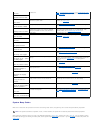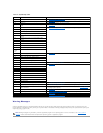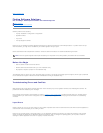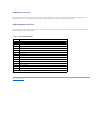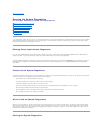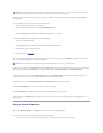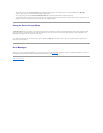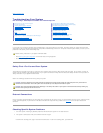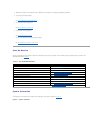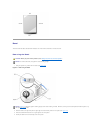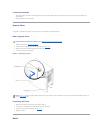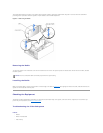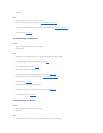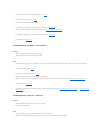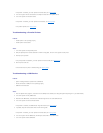
Back to Contents Page
Troubleshooting Your System
Dell™PowerEdge™1600SCSystemsInstallationandTroubleshootingGuide
If your system is not working as expected, begin troubleshooting by using the procedures in this section. This section guides you through some initial tests
and procedures that can solve basic system problems and provides troubleshooting procedures for components inside the system. Before you start any of the
procedures in this section, perform the following steps:
l Read "Running the System Diagnostics" for information about running diagnostics.
l Get the key to the system keylock.
Safety First—For You and Your System
The procedures in this guide require that you remove the cover and work inside the system. While working inside the system, do not attempt to service the
system except as explained in this guide and elsewhere in your system documentation. Always follow the instructions closely. Review all of the procedures in
"Safety Instructions" in your System Information Guide.
Observe the following precautions when working inside your system:
External Connections
Loose or improperly connected cables are the most likely source of problems for the system, monitor, or other peripherals (such as a printer, keyboard, mouse,
or other external equipment). A quick check of all the cable connections can easily solve many problems. See Figure2-4 for the back-panel features and
connectors.
Checking Specific System Problems
1. Turn off the system, including any attached peripherals, and disconnect the system from the electrical outlet.
2. If the system is connected to a PDU, turn the PDU off and then on again.
If the PDU is not receiving power, plug it into another electrical outlet. If it still is not receiving power, try another PDU.
Safety First—For You and Your System
Troubleshooting Redundant Power Supplies
External Connections
Troubleshooting a Nonredundant Power Supply
Checking Specific System Problems
Troubleshooting System Cooling
Start-Up Routine
Troubleshooting Expansion Cards
System Orientation
Troubleshooting System Memory
Bezel
Troubleshooting the Diskette Drive
System Cover
Troubleshooting a CD Drive
Baffle
Troubleshooting a Tape Drive
Checking the Equipment
Troubleshooting Hard Drives
Inside the System
Troubleshooting a RAID Controller Card
Responding to a Systems Management Alert Message
Troubleshooting a Microprocessor
Troubleshooting a Wet System
Troubleshooting the System Board
Troubleshooting a Damaged System
Resetting Corrupted BIOS Configuration
Troubleshooting the System Battery
Read the "Safety Instructions" in your System Information Guide.
CAUTION: The power supplies in this system produces high voltages and energy hazards, which can cause bodily harm. Only trained service
technicians are authorized to remove the system cover and access any of the components inside the system.
CAUTION: See "Protecting Against Electrostatic Discharge" in the safety instructions in your System Information Guide before performing any
procedure that requires you to remove the cover.



